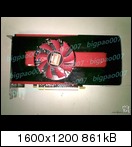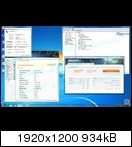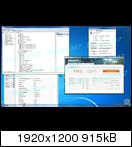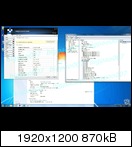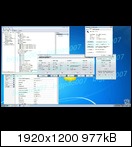Sorry, you can't prove me wrong with random unsubstantiated claims. At TPU the 7970 is only 70% faster than the 5870 @ 2560x1600 for over twice the transistor count. It's only 38% faster than the 6970 for 65% more transistors. It just gets worse at lower resolutions. Where exactly was I proven wrong?

Only 70%?? Ok...
You drew a parallel saying that 7970 is paying a "per transistor" performance price for moving to compute that "Nvidia already paid" That's what I've proved wrong. How are you not following along here, or are you being deliberately obtuse? It's pretty simple. Heck this is just a completely random thing I spotted while googling about GK104, GTX 285 (1.4b) had 71% the performance of GTX 480 (3 b)
http://tpucdn.com/reviews/NVIDIA/GeForce_GTX_480_Fermi/images/perfrel_1920.gif. Your theory is shot to hell by now multiple times over just in a couple random examples.
You compared to Caymen, I was pointing out Caymen was a nice improvement on 5870 without moving to compute. Compare SI to 5870 and most of the "per transistor cost" disappears, so it's arguably not "moving to compute" that did the "damage". I dont think any GPU generation gets 100% scaling per transistor these days BTW. I think 70% is close enough. Not counting driver gains, moving to newer games=more performance, etc. It's possible/likely I think you'd agree, that we could get a HD8000 revision that comes close to doubling Caymen for the same transistors as SI. Just as Caymen was a nice improvement on 5870 at the same transistor count.
Where are your numbers to back that up? AMD graphics division still isn't making money. Just look at their statements.
Link? I know little about AMD's financials, except that they've been break even/slightly profitable lately as a whole. I'm just assuming the GPU div is on the helpful side of that ledger. Even so, as you yourself admit, there could be a million factors going on there. The bottom line is as far as we know smaller dies are cheaper, period. Why must you skirt around this issue to the point of all but implying it isn't true?
Meaningful to who? Die size is a rather mundane topic. Yes it's relevant to manufacturing cost but does it provide any insight into architectural details? You're free of course to pretend those questions dont exist while staring blankly at die sizes but it wont make the questions go away.
Too me this all seems like "Nvidia loses here so I dont want to talk about it, shame on you guys for talking about some boring thing that we shouldn't care about harumph". How is die size less relevant than any other details we discuss? It's more so.
How has that worked out for you in the past?
Fine, great, usually. I could be wrong but AMD GPU's seem to age a little better, going back to the likes of X1950XT. (knock on my 4890, still runs BF3 mostly ultra campaign at 30 FPS). It's typically no huge thing I'll admit.
The die size argument is simply sticking your head in the sand. Just looking at the die sizes of say the 580 vs 5870 won't tell you very much about anything.
No, it's looking at a key cost parameter.
Die sizes don't matter at all to me as a customer. I'm not sure how you can start talking about architectural efficiency without first understanding the architectures you're discussing

I admit I dont understand GPU "architecture" very well. But it's easy to compare die sizes and performance.

